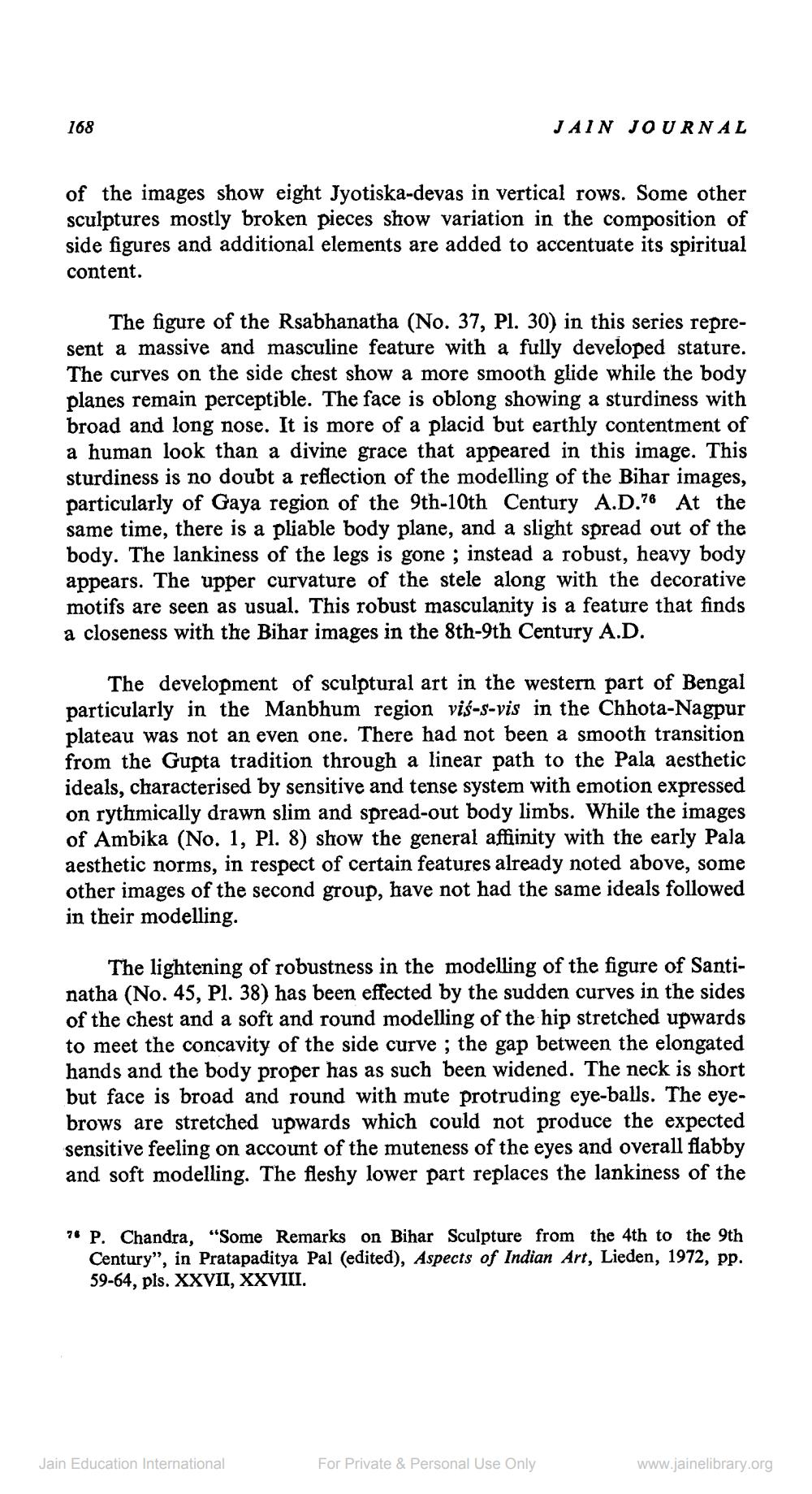________________
168
JAIN JOURNAL
of the images show eight Jyotiska-devas in vertical rows. Some other sculptures mostly broken pieces show variation in the composition of side figures and additional elements are added to accentuate its spiritual content.
The figure of the Rsabhanatha (No. 37, Pl. 30) in this series represent a massive and masculine feature with a fully developed stature. The curves on the side chest show a more smooth glide while the body planes remain perceptible. The face is oblong showing a sturdiness with broad and long nose. It is more of a placid but earthly contentment of a human look than a divine grace that appeared in this image. This sturdiness is no doubt a reflection of the modelling of the Bihar images, particularly of Gaya region of the 9th-10th Century A.D.76 At the same time, there is a pliable body plane, and a slight spread out of the body. The lankiness of the legs is gone ; instead a robust, heavy body appears. The upper curvature of the stele along with the decorative motifs are seen as usual. This robust masculanity is a feature that finds a closeness with the Bihar images in the 8th-9th Century A.D.
The development of sculptural art in the western part of Bengal particularly in the Manbhum region vis-s-vis in the Chhota-Nagpur plateau was not an even one. There had not been a smooth transition from the Gupta tradition through a linear path to the Pala aesthetic ideals, characterised by sensitive and tense system with emotion expressed on rythmically drawn slim and spread-out body limbs. While the images of Ambika (No. 1, Pl. 8) show the general affiinity with the early Pala aesthetic norms, in respect of certain features already noted above, some other images of the second group, have not had the same ideals followed in their modelling.
The lightening of robustness in the modelling of the figure of Santinatha (No. 45, Pl. 38) has been effected by the sudden curves in the sides of the chest and a soft and round modelling of the hip stretched upwards to meet the concavity of the side curve ; the gap between the elongated hands and the body proper has as such been widened. The neck is short but face is broad and round with mute protruding eye-balls. The eyebrows are stretched upwards which could not produce the expected sensitive feeling on account of the muteness of the eyes and overall flabby and soft modelling. The fleshy lower part replaces the lankiness of the
76 P. Chandra, "Some Remarks on Bihar Sculpture from the 4th to the 9th
Century", in Pratapaditya Pal (edited), Aspects of Indian Art, Lieden, 1972, pp. 59-64, pls. XXVII, XXVIII.
Jain Education International
For Private & Personal Use Only
www.jainelibrary.org




